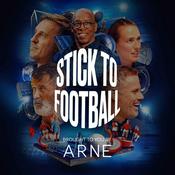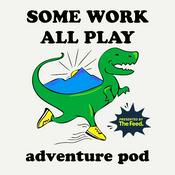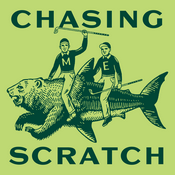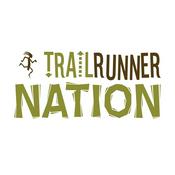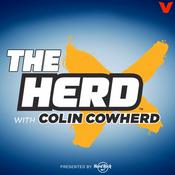323 episodes

Holiday Running Survival Guide — Keep Your Fitness on Track
2025/12/19 | 7 mins.
Staying on track through the holidays: practical, low-stress strategies to keep your running consistent over Christmas & New Year. Learn the “minimum effective dose,” how to use short drills and strength sessions when you can’t run, smart deloading, interval options for travel, and how RunRx Zooms & the app can keep your form sharp while life gets busy.Key takeaways ✅ Pre-plan two realistic workouts for holiday weeks — win those and you’ll reduce stress and stay consistent. ✅ Do a short drill/strength/self-care session (5–15 min) when long runs aren’t possible — it preserves form and fitness. ✅ Treat holiday weeks as intentional deloads: shorten distance or pull back intensity, not quit. ✅ Use short intervals or tempo blocks when traveling — they preserve stimulus with minimal time. ✅ Reset during long runs: stop, do a quick drill, and return to rhythm if your form drifts. ✅ Zoom coaching is a great pre-race or pre-run tool — you’ll feel your next run improve after a coached drill session. ✅ Consistency > volume: a few quality, well-timed sessions beat frantic miles during a stressful week.Chapters 00:00 — Episode intro & holiday context 00:29 — Holiday scheduling problems & why runners stress 01:10 — Coach Valerie: pre-plan the “minimum” — two workouts you will do 02:10 — Use drills, strength, and self-care when long runs aren’t available 03:05 — How to deload properly during holidays (shorten distance, keep form) 04:10 — Short interval workouts for travel days — how to preserve fitness fast 05:15 — Why short runs can be enough — the mental win of getting out 06:00 — Virtual tools: Zoom coaching & RunRx app as holiday solutions 06:50 — Membership options, app info, final tips & outro▶️ Free 30-Day RunRX Reboot - Skill , Strength & Self-Care https://www.youtube.com/watch?v=a0N-GZ0AosI&list=PLDPcF8ZrDdILC8bYyn2zR-4xvqKRzp2re▶️ Join the RunRX Membership https://runrx.fit/join-runrxstrong📱 Find us in your app store for Apple and Google - RunRX Academy.

VO₂ Max Is a Gimmick — Train by Feel, Not Your Watch
2025/12/12 | 14 mins.
Learn why VO₂ max (and other watch metrics) don’t tell the whole story — and what really improves running performance: better movement, cadence, heart-rate awareness, and consistent drill work. Coach Caroline and Coach Valerie cut through the gimmicks, explain why lab VO₂ testing ≠ instant speed, and give practical steps you can use on your next run to feel and perform better.✅ Key takeaways ✅ VO₂ max is largely genetic and often over-sold by gadgets — it’s an estimate on your watch, not a magic fix. ✅ Movement and skill (cadence, elasticity, posture) create the biggest gains for most recreational runners. ✅ Use heart rate + feel together — let your body tell you when to ease up, reset, or hydrate. ✅ Short, focused drills (hops, cadence work, metronome intervals) build the elasticity that reduces impact and delays fatigue. ✅ Consistency beats one-off metrics: train movement, test nutrition, and practice pacing — don’t chase numbers alone.▶️ Free 30-Day RunRX Reboot - Skill , Strength & Self-Care https://www.youtube.com/watch?v=a0N-GZ0AosI&list=PLDPcF8ZrDdILC8bYyn2zR-4xvqKRzp2re▶️ Join the RunRX Membership https://runrx.fit/join-runrxstrong.📱 Find us in your app store for Apple and Google - RunRX Academy.Enjoyed the episode? Please subscribe, rate, and share

Cadence & Elasticity: Safely Train Toward 180
2025/12/05 | 12 mins.
Learn what cadence actually is, why 180 SPM is useful (but not an overnight fix), and how elasticity drills + metronome practice help you pick up rhythm without blowing up your aerobic effort. Coaches Caroline & Valerie break cadence down into simple progressions, explain why older runners stiffen (and how to reverse it), and give practical drills you can use today to make your easy runs feel easier and your speed work more effective.✅ Key takeaways ✅ Cadence = steps per minute; the magic zone many coaches reference is ~180 SPM but you progress there slowly. ✅ Building muscle elasticity (hops, ball-of-foot drills) reduces impact and delays fatigue — it’s trainable, not only genetic. ✅ Use short cadence drills + a metronome before trying long stretches at higher SPM — don’t force 180 overnight. ✅ Keep time-based long runs (e.g., two-hour runs) rather than chasing an arbitrary mile total if that’s safer for you. ✅ Stop, reset, do a short drill if your form drifts on a long run — small mid-run corrections beat long recoveries. ✅ Test fueling and cadence in training, not on race day — everything is personal; experiment, measure, repeat.▶️ Free 30-Day RunRX Reboot - Skill , Strength & Self-Care https://www.youtube.com/watch?v=a0N-GZ0AosI&list=PLDPcF8ZrDdILC8bYyn2zR-4xvqKRzp2re ▶️ Join the RunRX Membership https://runrx.fit/join-runrxstrong 📱 Find us in your app store for Apple and Google — search RunRx Academy

Taper Like a Pro — Race-Week Strategy & the Carb-Loading Truth
2025/11/21 | 23 mins.
Learn why you taper, what a smart taper actually looks like, and why “carb-loading” isn’t a one-size solution. Coaches Caroline and Valerie break down race-week intensity vs. volume, practical taper templates, real fueling rules you should test in training, and step-by-step actions to arrive at the start line fresh, confident, and race-ready.✅ Key takeaways✅ Taper purpose: reduce fatigue while preserving the fitness you earned — not to “rust” you into race day.✅ Pull intensity more than you pull volume — keep short, familiar runs so legs stay springy.✅ Two-hour long runs (or time-based training) beat arbitrary 20-mile checks for most recreational runners.✅ Test nutrition in training — gels, real food, and carb strategies are highly individual; don’t experiment on race day.✅ Split volume (two shorter runs a day or back-to-back long-ish days) builds time-on-feet safely when you can’t do a single multi-hour block.✅ Strength & drills during taper week: short, low-intensity strength and hop/drill work preserves neuromuscular readiness without adding fatigue.✅ Practical race-week checklist (sleep, hydration, kit, warm-up, pacing plan) beats myths like one-time “mega” carb dumps.Suggested episode chapters (no timestamps)Welcome & why tapering scares runnersWhat a taper is — physiology & recovery principlesRace-week strategy: intensity vs. volume (what to cut and what to keep)Two-hour rule and time-based training vs. mile-based thinkingCarb-loading: what it helps, what it doesn’t, and how to test fueling in trainingPractical week-by-week taper templates (example approaches)Race-week checklist & pacing adviceFinal coaching tips & where to get helpActionables you can do this weekReplace one long weekend run with two shorter runs (AM + PM) to experiment with split volume.Do 3×30s ball-of-foot hops after warmup to preserve elasticity without fatigue.Run a practice fueling session: test the exact gel/real food and timing you’ll use on race day.

Beyond 26.2 — How to Train for an Ultra (Practical, No-Nonsense Plan)
2025/11/14 | 20 mins.
What makes an ultramarathon different from a marathon — and how should your training actually change? In this episode Coaches Caroline and Valerie explain the real demands of ultra running (road vs trail, time-on-feet, carry & fueling needs) and give a coachable, down-to-earth plan for runners who want to go beyond 26.2 miles without breaking themselves.🔑 Key takeaways✅ Ultra = any distance > 26.2 miles (common formats: 50K ≈ 31.07 miles, 50-mile, 100K, 100-mile).✅ Train similarly to a marathon — but add time-on-feet: more total volume and more sessions that simulate long hours on your feet.✅ Trail ultras aren’t just longer road runs: add technical trail practice, uphill/downhill drills, and terrain-specific strength.✅ Practice carrying fuel & kit — learn how to run while carrying hydration, food, poles or a vest; practice fueling windows you’ll use on race day.✅ Split your volume if needed — two shorter runs in a day (or back-to-back long days) protects recovery while building hours.✅ Elasticity & drills matter more than extra minutes — short daily drills (ball-of-foot hops, cadence drills, strength progressions) build tendon resilience and reduce overuse injuries.✅ Strength for endurance — full-body, bodyweight-first strength (glute bridges, single-leg work, core stability) improves endurance and helps you carry load.✅ Fueling & pacing are a strategy, not luck — practice stomach tolerance in training so you’re not improvising on race day.✅ Mindset: walk when smart, run when it helps — ultras are tactical; knowing when to power-hike or walk technical sections saves energy and time.What to try this week (actionable)Do 3×30 seconds ball-of-foot hops after your warmup, focusing on light, repeated rebounds.Add one trail-technical session (45–90 min) on varied surface; practice short uphill power, short downhill control.Pick one weekday and split your run: 30–60 min AM + 30–60 min PM to start building time-on-feet without a single 3–4 hour block.Practice carrying 1–2 lbs of water/food on a short 60–90 min run to learn gait & hydration pacing.Add two weekly bodyweight strength sessions (squats, single-leg deadlift, glute bridges, planks) 20–30 min each.Who this episode is forRecreational runners stepping up to a 50K/50-mile or experienced marathoners curious about trail ultras — especially those who can’t run 6+ hours every weekend but want to get there safely and enjoyably.
More Sports podcasts
Trending Sports podcasts
About The RunRX Podcast
Listen to The RunRX Podcast, The Athletic FC Podcast and many other podcasts from around the world with the radio.net app

Get the free radio.net app
- Stations and podcasts to bookmark
- Stream via Wi-Fi or Bluetooth
- Supports Carplay & Android Auto
- Many other app features
Get the free radio.net app
- Stations and podcasts to bookmark
- Stream via Wi-Fi or Bluetooth
- Supports Carplay & Android Auto
- Many other app features


The RunRX Podcast
download the app,
start listening.








